// BUILD / 2016: how it was
Not so long ago, our largest developer conference was held: // BUILD , at which many important announcements were made ( about Xamarin , about the cloud , about the Bot Framework ). However, in addition to the announcements, it is interesting to read about how the conference itself took place, what was the atmosphere at it, what was interesting for the participants. So that you could plunge into the atmosphere of the conference, we asked our partner students who were there to share their impressions. The article below was prepared by Evgeny Grigorenko and Ilya Ryabukhin .
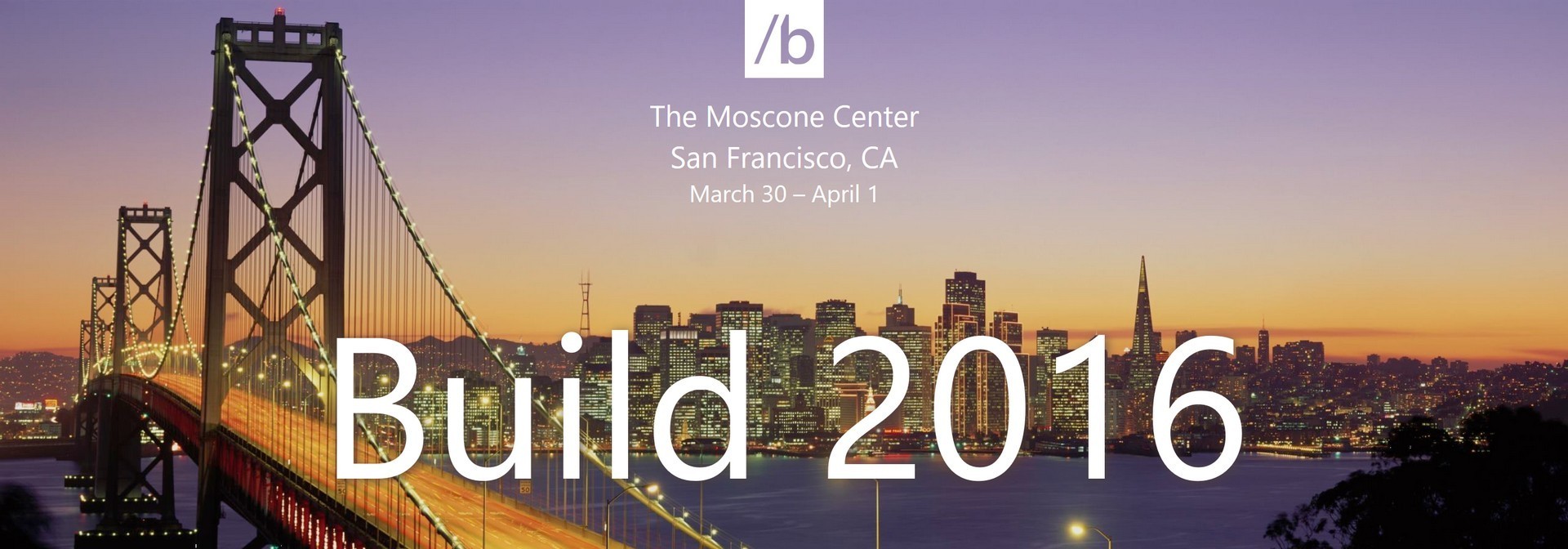
This year, we, the three student partners of Microsoft, were lucky enough to attend the conference // BUILD / 2016. And in this article, speaking of // BUILD /, we would like to cover not so much the announcements and updates of existing technologies, but to talk about such third-party things , as the registration process, organizational issues, technology exhibition and coincided with the conference itself the American final of the Imagine Cup.
About the venue
This year, like many times before, the conference was held at the Moscone Center - the very same business center of American companies, where the Google IO and Apple WWDC conferences will take place in a couple of months. But unlike previous years, this // BUILD / was waiting for innovation - adding additional space in the form of an underground conference center across the road from the Mariot hotel. On the one hand, this made it possible to conduct many parallel reports and significantly expand the number of topics under consideration, but at the same time such an arrangement made it necessary to run, but the situation was saved by thirty-minute breaks between sessions and everywhere hung panels with information about the occupancy of the audiences. This, at least, allowed not to run for nothing.
Speaking of San Francisco itself, in which the conference was held, it is worth noting the strong diversity of the city. On the one hand, a tourist unfamiliar with American reality meets the world of the skyscrapers of the financial district with all the majesty of its architecture, on the other - Pacific beaches and the private sector with cozy and colorful two-story houses. And do not forget about the two symbols of the city: the Golden Gate Bridge and the historic tram with the quaint name Cable Car (cable car?). In general, the pastime was limited not only by the conference, the city itself gave a lot of opportunities, allowing you to take a break from the flood of information and to spend your free time with advantage.
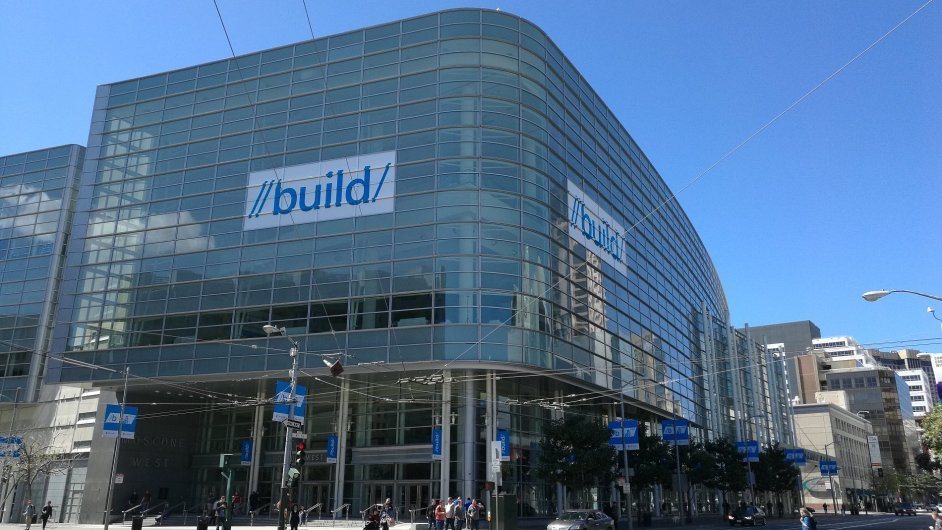
About registration and thread management
Those who have ever been to large international conferences know that their organization is far from the simplest. And the problem is not at all in inviting eminent speakers or implementing complex logistics solutions, the peculiarity is to organize the process in such a way that all thousands of people do not feel any delays and do not accidentally find themselves in the center of a huge crowd of people. This manifested itself in trifles, but these trifles determined a well thought out and perfected solution over the years.
For example, registration for the conference began a day before the first events, and the process itself was as automated as possible. Firstly, all the necessary information such as your full name, place of work, mail was collected at the time of registration on the site. At the site, the process was divided into two stages: self-registration at the self-service construction site and the final, already human, verification of documents with the subsequent issuance of a badge. Moreover, the automatic registration was reduced to a simple verification of previously entered information, and to speed up the authentication was carried out using QR codes sent to all participants in advance by mail. After confirmation, the badge was automatically printed on a specialized printer, and the participant was informed of the number of the document verification rack on which it could be received.

With dinners, in contrast to registration, the task was even more difficult - it was necessary to feed all the people for a very limited period of time in one hour and at the same time give the opportunity to go about their business and have time to get to the place of the next session. Therefore, in the allotted time, on each floor of the business center, two or three shelves appeared with products pre-packed in paper bags for easy carrying. But all this in practice was only part of a large process of effectively managing the flow of people, which manifested itself many more times throughout the conference.
')
About Keynote and Announcements
On the day when the conference began, after a long flight to San Francisco, I felt like a “lark” because of a sudden change of time zones, I suddenly found myself at 6.40 am at the entrance to the business center. And by that time there was already a queue ... After 20 minutes, by the time the doors of the conference opened, the queue of those who wanted to take a better place had already reached the end of the quarter and turned the corner.
Keynote itself began with the 20-minute address of Sathya Nadella, who, like last year, speaking about his vision of the corporation, highlighted three main areas: personal computing, the intelligent cloud and the re-creation of business processes. Then followed the announcements, the conversation about which continued the next day, taking a total of about 5 hours. Probably everyone who encounters Microsoft technologies every day found something of their own. Of course, this is, of course, the transfer of the recently acquired Xamarin to Open Source, an overview of the many innovations of the Windows 10 anniversary update, and, last but not least, the start of supplying the development version of the HoloLens augmented reality glasses.
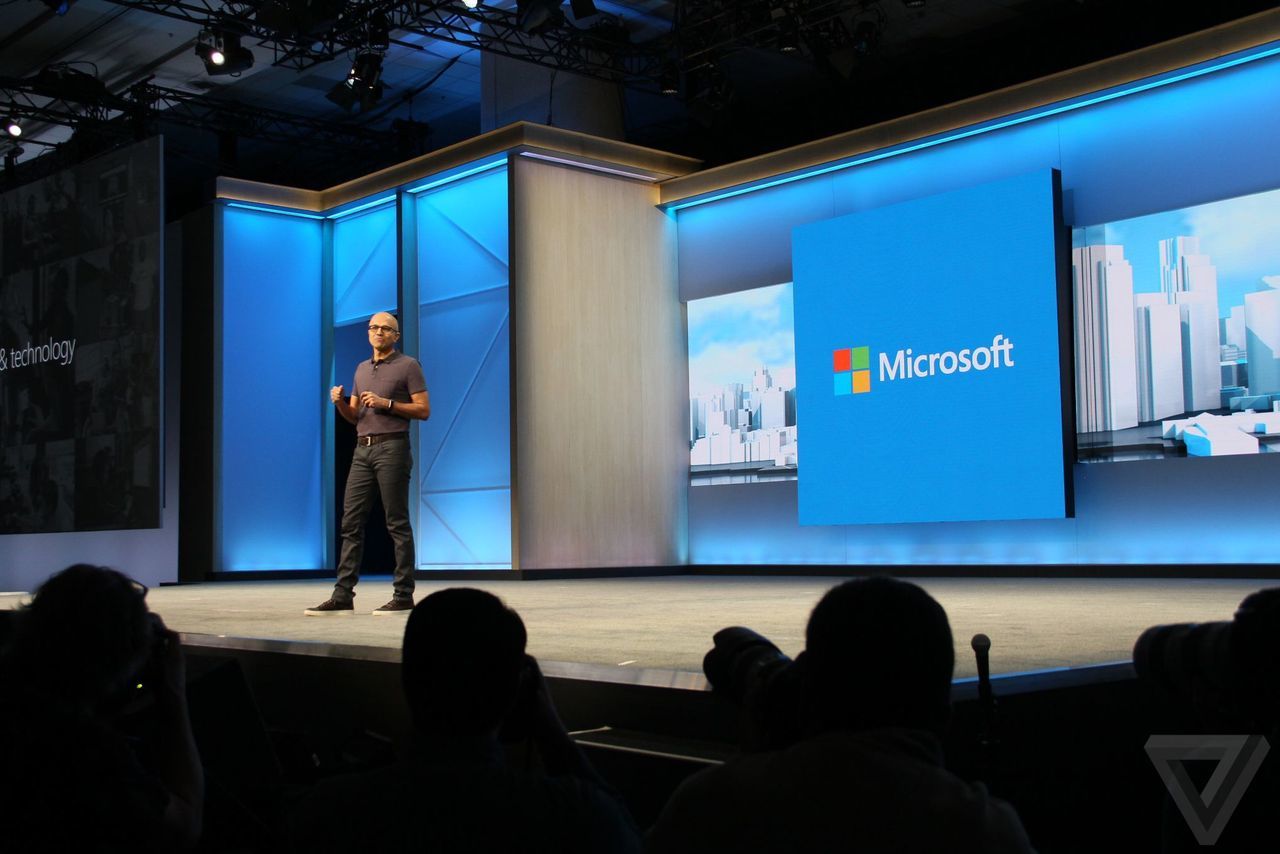
There were many other interesting announcements, such as the launch of Azure Functions and Microsoft Graph. But in their background, innovations in the concept of personal computing stood out in particular. It all started with the official launch of Microsoft Cognitive Services (formerly Microsoft Project Oxford) - a set of machine learning services available as easy-to-use REST APIs. Then followed the story of the blind programmer Sakib Sheikh about Seeing AI, which gives him, on the basis of these services, the opportunity to receive a verbal description of the world around him. Frankly, in my personal list, it is these news that claim to be the largest conference announcement. Because this is not just another service, but a whole shift in concept, proving that modern technologies are becoming quite adaptive and intelligent and are already ready to begin to change people's lives for the better in a completely new way.
Another major announcement in this area was another conceptual shift, called "Communication as a platform." Its essence is that even though we are still as far from real artificial intelligence as decades ago, communication with a machine in a natural language can become a daily reality in a completely future. Microsoft’s contribution to the realization of this idea is to further expand Cortana’s capabilities and integrate it into Skype to create user experience that brings it closer to the original prototype of the Halo games. Complements this picture announced Bot Framework , giving developers the opportunity to write intelligent text bots to create a truly natural communication.
About reports and Channel 9
Keynote was followed by the main substantive part of the conference - the sessions, and, by the way, there were just under 500 of them. They were divided into 3 types: hourly reports, hourly laboratory work with the moderator and twenty-minute reports at the exhibition. The first two types corresponded to the main content of the conference from the theoretical and practical aspects of consideration, while in the latter either relatively short questions were considered, or the actual announcements of past years were “recalled” until now. In addition, throughout the conference, there was a zone of small independent laboratory works, where anyone could try almost any of the modern technologies of the corporation. Also during any break, Channel 9 studio attracted particular attention, where recognized experts and people responsible for the development of various technologies answered questions from presenters and the audience in a thirty-minute interview format. Questions were collected using Twitter, and therefore any online audience could feel part of the conference and get answers to their questions.
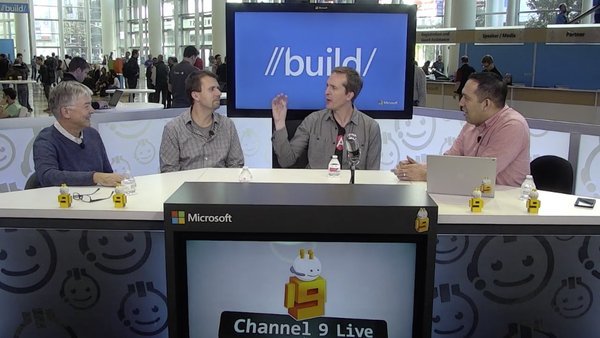
As was largely evident at Keynote, the sessions focused on the summer update of Windows 10 and the corresponding expansion of the universal Windows platform. No less important in the context of the number of dedicated reports were the versatile consideration of the concept of personal computing from purely technological issues to examples of practical application. The leaders of the list of leaders were the development of solutions for the Internet of Things (especially in the laboratory work format) and the use of Microsoft Azure and Office 365 cloud technologies. Other issues like the future of C #,. NET and Visual Studio were given much less time, since the main announcements in the context of. NET Core were made last year. By the way, the recording of all reports is now available in a special section of Channel 9 .
O technological hub and HoloLens
The main social site of the conference was the hub. The hub is a large exhibition of several hundred square meters, serving as a meeting place for participants, speakers and technology experts. There were stands both on all major products and announcements of the corporation itself, and on the solutions of Microsoft partners. In addition, a system was created within the hub itself to search for the desired speaker: the participant had to enter the name of the technology or the name of the speaker, how information was immediately available, where and when it would be possible to find expert help.
The zone with the announced services included in the Cortana Intelligence Suite was especially popular. First of all, due to the large number of different demos and the general clarity of the technologies themselves. Not less popular and the exhibition of devices such as Band, Surface Book, etc., and areas devoted to various issues of Azure and Windows 10 development. Additionally, it is worth noting a real exhibition in the museum sense of the word, devoted to changes in the design of Windows from console times, square bags and floppy disks to modern trends of the universal Windows platform and HoloLens. Each epoch was presented as a small stand with a description, and the consultants present at the site were ready not only to tell the details about the exhibition, but also to help with the visual design of new applications for all form factors from Windows 10 IoT to HoloLens and Surface Hub.
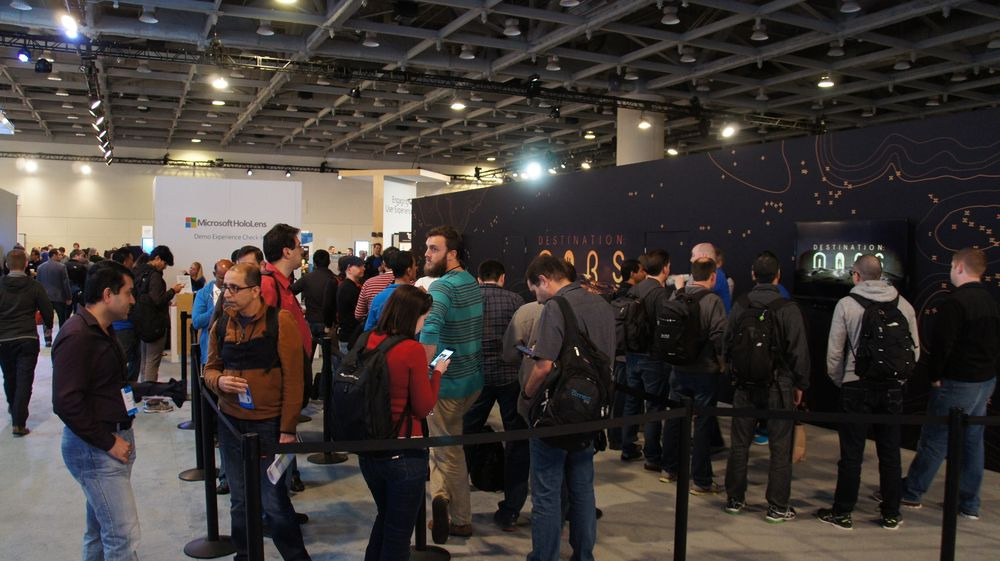
The largest area of the exhibition was dedicated to two different HoloLens demos. In order to curb the excitement, access was made only on tickets, which were either handed out to the lucky ones who were in the right place at the right time, or were given in the form of rewards for some achievements. The first demo was dedicated to the HoloLens home use experience and included such steps as decorating a room with holographic paintings, watching a full-length video and adding a sculpture in the form of a large breathing dinosaur to the interior. The second demo "Destination: Mars" was even more interesting. It was prepared by NASA and is expected to be launched for mass use only from the beginning of this summer. The participants of the conference // BUILD / were given a unique opportunity to try it first. As the name implies, the demonstration was both simple and innovative - people found themselves in the middle of a three-dimensional model of Mars, recreated from Oppotunity and Curiosity rovers, and parallel explanations were made using a high-quality three-dimensional model of one of the mission members. Having participated in the first demo, I will say only one thing: HoloLens is not a myth and not a trick, it exists and works exactly as shown in the most fantastic commercials!
About the American Final of the Imagine Cup
Imagine Cup , as many people probably already know, is an international student competition for IT projects, in which participating teams compete in three categories: games, innovations and social solutions. This year, the American final of this competition was combined with the conference and was held in a special place allocated for this place in the hub. Unlike the Russian final (it will be on April 23 in Moscow ), the American distinguished itself by deep integration into the conference itself. All teams were given the opportunity to attend any reports and communicate with experts not only after the sessions and in the hub, but also during specialized meetings with technology experts during lunch. The day before the final, all projects were presented at a specialized exhibition on the first floor, where everyone could discuss the presented solutions, find out all their details and personally try out the presented solutions. All projects differed in something special, some of the most memorable were:
- simulator for certification of new policemen;
- a game that identifies and solves visual problems in children;
- a mobile application that allows you to read the Brahl font on a photo;
- several VR games and more (recording presentations of all the finalist projects are already available on Channel 9 !).
Conclusion
To sum up, the Build 2016 conference is the most important event in the Microsoft ecosystem, interesting for developers around the world. It affects the scale of announcements, the range of technologies covered and the level of immersion in them. In general, the event made a very pleasant impression and, most likely, will be remembered for a long time by its atmosphere.
Source: https://habr.com/ru/post/281511/
All Articles